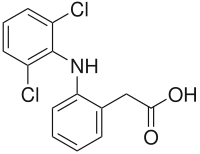
Photo from wikipedia
Seven brands of veterinary rabies vaccines are commercially available in Sri Lanka, but there is no established procedure to test the potency of the vaccines at the local level, especially… Click to show full abstract
Seven brands of veterinary rabies vaccines are commercially available in Sri Lanka, but there is no established procedure to test the potency of the vaccines at the local level, especially prior to their release. The aim of this study was to test the potency of these vaccines using a mouse challenge test in collaboration with the EU/WOAH/WHO Reference Laboratory for Rabies, ANSES-Nancy, France. Based on the European Pharmacopoeia, the inactivated rabies vaccines complied with the mouse potency test if the estimated potency is ≥1.0 IU in the smallest prescribed dose. Among the eight tested vaccines, four single-dose preparations (Rabisin™, Raksharab™, Nobivac™ RL, and Nobivac™ Rabies) were compliant, with potencies of 12 IU/dose, 7.2 IU/dose, 4.4 IU/dose, and 3.4 IU/dose, respectively. Three of the single-dose preparations (Canvac™ R, Defensor™ 3, and Rabies killed vaccine) were not compliant, with potency values <1.0 IU/dose. One multidose preparation (Raksharab™ multidose) had a potency of 1.3 IU/dose, even though the test was not validated. Based on these results, it appears that some rabies vaccine batches that are currently available in the local market do not comply with the mouse potency test. Testing the vaccines’ potency before registration and release to the market appears to be an important step to allow good immunization to animals during pre-exposure vaccination programs.
Journal Title: Vaccines
Year Published: 2023
Link to full text (if available)
Share on Social Media: Sign Up to like & get
recommendations!